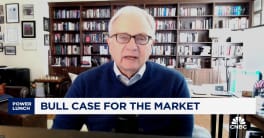A global advance in equities helped US stocks continue to rally on Tuesday. The last two days have seen stocks rise enough to erase losses from the previous two weeks. Indeed, the S&P 500 is just 15 points shy of the 2009 peak reached on Sept. 22.
As of 1:00, the S&P 500 is up 1.48%, or 15 points, to 1,056. The Nasdaq is up 1.74% to 2,104, and the Dow is trading 1.39% higher at 9,733.
No major data from the US hit markets this morning, but third-tier data from the retail world said sales were rising last week. The weekly report from the International Council of Shopping Centers & Goldman Sachs said sales were up 1% compared to the last year and 0.3% compared to the prior week.
“A bout of cooler weather helped to spur customer traffic, especially at department stores and discounters, and helped the month to finish on a positive note,” said Michael Niemira, chief economist at the ICSC. Despite those gains, he said September sales were down around 2% overall.
That’s in line with the Johnson Redbook results released today, which said sales in September declined 2.2%, beating forecasts of -2.9%.
Markets are also responding positively to the Royal Bank of Australia’s surprise decision to hike short-term interest rates 25 basis points to 3.25%.
“It is clear that there is a psychological bid in the market as the symbolism of the first rate hike from a G20 nation is trumping any negative considerations that go hand-in-hand with higher rates,” said Patrick O'Hare of Briefing.com.
O’hare called the decision “another confirmation that the world is back from the brink of economic disaster.”
Benjamin Reitzes, economist at BMO Capital Markets, said the move would help strengthen the Aussie dollar against the greenback. “With the Fed not expected to start tightening until late-2010, continued rate hikes likely paves the way for the Aussie $ to eventually hit parity vs. the greenback.”
With renewed appetite for equities, yields for Treasuries are slightly higher across the curve. After reaching as low as 3.14% late last week, the benchmark 10-year yield is two basis points higher at 3.26%, while the 30-year yield is up four basis points to 4.07%.







